Every year, Football Outsiders puts together a list of the NFL's best and brightest young players who have barely played. Eighty percent of the draft-day discussion is about first-round picks, and 10 percent is about the players who should have been first-round picks, but instead went in the second round.
This list is about the others.
Everybody knows that Saquon Barkley and Josh Rosen are good. There's a cottage industry around the idea of hyping every draft's No. 1 quarterback as a potential superstar. This is a list of players who have a strong chance to make an impact in the NFL despite their lack of draft stock and the fact that they weren't immediate NFL starters. (Our full criteria for who's eligible for this list is at the bottom of this article.)
Previous instances of the list have hyped players such as Geno Atkins, Grady Jarrett, Malcolm Butler and Jamaal Charles before they blew up. Last year's list included Tyreek Hill, Javon Hargrave, Justin Simmons and Michael Pierce.
Most of these lists are heavily dependent on the depth of incoming draft classes. For instance, this year's list doesn't have a quarterback, because It has been a down few years for quarterback depth. However, it's quite heavy on wide receivers, and there are a few other wideouts who would normally be list-eligible who got pushed to the honorable mention list.
Our No. 1 prospect was not hard this year, as he also led the list published in the middle of the 2017 season. Here are the top 25 prospects for the 2018 season:

1. Carl Lawson, DE, Cincinnati Bengals
Age 23 | 492 defensive snaps | Fourth-round pick (2017)
It's kind of mind-boggling how the NFL let Lawson fall to the fourth round, as he was rumored to be a first-round prospect for years before he actually declared for the draft. A torn ACL and an injured hip in the years before 2016 likely had him red-flagged by some teams on medicals, despite Lawson tearing up the SEC with 13.5 tackles for loss and nine sacks.
Drafted by the Bengals, Lawson has been an immediate hit. Charting by Sports Info Solutions ranked Lawson in the top 30 in the NFL for hurries despite his low snap count, and he also picked up 8.5 sacks. The Bengals have a knack for hitting big on their middle-round picks by taking some risks, and Lawson may well be the latest in the trend that started with Geno Atkins. While Lawson didn't exactly tear up our SackSEER edge-rusher projection system (with a SackSEER rating of just 27.5 percent), he also lost most of his last three years in college to injuries, so that makes some sense.
Lawson showed up to organized team activities ripped and prepared for a bigger role this year. Watch out, AFC North quarterbacks.
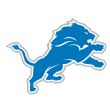
2. Kenny Golladay, WR, Detroit Lions
Age 25 | 477 offensive snaps | Third-round pick (2017)
Golladay was a bit of a surprise pick in the third round, a player who was pegged as a Day 3 guy by most public analysts and publications. But he profiles as a perfect outside receiver for the Lions -- 6-foot-4 and 218 pounds, and will play anywhere -- and he cut into veteran snap counts early after an explosive training camp and a preseason that put him squarely on the fantasy radar.
Hamstring troubles kept him out of the full-time lineup, but Golladay was a big contributor for the Lions down the stretch. He finished with 130 DYAR, the second-most of any receiver targeted fewer than 50 times, and raised his catch rate from 50 percent after Week 9 to 58 percent at season's end. Golladay's combination of size and speed is fairly uncommon, and he has no trouble winning catches in traffic.
The Lions still have Marvin Jones Jr. and Golden Tate, but by removing Eric Ebron, some additional targets should open up for Golladay. It would not be a surprise to see him take a major step forward in his sophomore season, assuming he can stay healthy this time around.

3. Rasul Douglas, CB, Philadelphia Eagles
Age 23 | 420 defensive snaps | Third-round pick (2017)
A junior college guy who had the light turn on for him, Douglas was heavily recruited but chose West Virginia to stay closer to his home in New Jersey. He led the NCAA with eight interceptions in 2016, and his stellar size (6-foot-2, 209 pounds) and play made him a pretty safe third-round pick.
With rookie corners playing outside, all you're hoping for is for them to be respectable. Douglas was oft-targeted when he played, but his 57 percent success rate was in the top 30 among all qualifying cornerbacks. He broke up a ton of balls on his targets, finishing with two picks and 11 deflections in just 53 targets. Yes, that number is buttressed by the fact that Philadelphia's front seven has been excellent. But even still, it was an admirable rookie year.
Douglas will have to play less hot-and-cold in 2018 to take the next leap in his skill level. He also isn't guaranteed a steady role, as the Eagles will break in second-rounder Sidney Jones off injury and return Jalen Mills and Ronald Darby. But Douglas flashed in his early snaps and has earned more playing time.
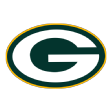
4. Aaron Jones, RB, Green Bay Packers
Age 24 | 236 offensive snaps | Sixth-round pick (2017)
While the backfield situation in Green Bay appears to be fluid at the moment, Jones has definitely put up production on the field so far. A 31.3 percent DVOA and 143 DYAR in 81 runs was impressive -- he had the most DYAR of any back with fewer than 100 rushes. An MCL sprain put him on the shelf in November and made it hard for him to find his way back into the rotation.
Jamaal Williams (too many snaps to be on the list) seems to be regarded as the favorite to lead the Packers in rushing this year. Williams is certainly a technically savvy back who offers a lot in pass protection and as a receiver. But Jones is far more explosive, testing in the top 84th percentile of all running backs since 2000 in the broad jump, vertical jump, and three-cone drill at the combine. He's no slouch in the passing game either, and his style would seem to fit more with the quick-strike elements the Packers seem to favor under Mike McCarthy.
This isn't to say Williams or Ty Montgomery are bad backs or overrated in any way. We just think highly enough of Jones to say he has a chance to seize the job outright. Of course, he'll have to overcome a two-game suspension (for violating the NFL policy and program for substances of abuse) first. Let's hope he isn't another in the line of talented backs who let off-field issues derail promising careers.
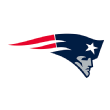
5. Derek Rivers, DE, New England Patriots
Age 24 | 0 defensive snaps | Third-round pick (2017)
A true athletic freak coming out of college, Rivers recorded a 4.61 40-yard dash and a 6.94 three-cone drill time at 248 pounds. The list of college edge rushers who have done that in the past 10 seasons who were actually well-regarded as prospects is short, and includes people you may have heard of such as Von Miller and Vic Beasley Jr. The easy comparison here is Connor Barwin, another small-school, all-tools edge rusher who went in the second round. Rivers played at Youngstown State, which likely kept him from being popped earlier in the draft. He managed 36 sacks there during his past three seasons.
Rivers was a complete non-factor in his rookie season because of a torn ACL during training camp. Had he played, he probably would've played enough to make his way off this list given how dire things became for the Patriots at edge rusher last season. They were giving signed practice-squad players huge roles up front.
Rivers profiles as a Derrick Morgan-esque pass rusher, at least, with the upside to be one of the 32 best pass-rushing ends in the game. It would be more than a mild surprise if he wasn't involved heavily in New England's defensive schemes this season. Only our total lack of NFL data prevents us from putting him higher here.

6. Chris Godwin, WR, Tampa Bay Buccaneers
Age 22 | 449 offensive snaps | Third-round pick (2017)
A technically sound, draftnik favorite coming out of Penn State in 2017, Godwin plays the ball well in the air, has the size to go get it, and was an instant contributor for the Nittany Lions. While speed is not necessarily his best trait, his size (6-foot-1, 209 pounds) matched with 4.4 40-yard dash speed made him a bit of a problem for defenses without jumbo-sized cornerbacks. His only real weakness was a lack of open-field vision and change of direction.
Godwin's first start came in Week 9, and he became more of a contributor to Tampa Bay's offense in December, playing the majority of the snaps over Adam Humphries. He ended the season with back-to-back 90-plus-yard efforts against Carolina and New Orleans, teasing what he could provide in 2018.
The Bucs have some post-hype sleeper feel to them this year, and their pass offense was actually pretty good last year even if everyone stopped watching. Godwin and Jameis Winston are a great match; a receiver who can catch anything, and a quarterback who will throw anywhere. Don't be surprised if Godwin not only plays 80 percent of the snaps in 2018, but also makes DeSean Jackson sort of an afterthought.

7. Larry Ogunjobi, DL, Cleveland Browns
Age 24 | 303 defensive snaps | Third-round pick (2017)
A draft faller almost exclusively because of his average size (6-foot-3, 305 pounds), Ogunjobi was dinged for being too short even though he started from Day 1 at UNC Charlotte, and racked up 11 or more tackles for loss in each of his past three seasons. At the combine, he tested in the top 79th percentile of defensive tackles since 2000 in the 40-yard dash, vertical jump and broad jump. That explosion helps him win off the snap.
In his rookie season, Ogunjobi was mostly a change-of-pace interior lineman, starting only when Danny Shelton was out. He managed 4.5 pressures and one sack, but has the ability for more production if he can get off blocks a little better than he did in his rookie season.
With Shelton gone to New England, a starting role looks to be in the cards for Ogunjobi. At the very least, his run defense in his rookie season opened the door for the Browns to deal Shelton. And if he taps into his natural explosion, he could be a long-term difference-maker for the Browns up front.

8. Jordan Willis, DE, Cincinnati Bengals
Age 23 | 361 defensive snaps | Third-round pick (2017)
This starts with a ridiculously high SackSEER score coming out of college (93.3 percent). Willis posted Myles Garrett-like numbers at the combine, running the 40-yard dash in a blistering 4.53 seconds while recording a vertical leap of 39 inches and a broad jump of 10 feet, 5 inches. He combined that with 20.5 sacks in his last two years at Kansas State to have the second-highest rating in the class after Garrett.
But the college and combine results are draped with an inimitable downside: Willis didn't pass the eye test as a college rusher. He didn't bend the edge much in college and looked a little stiff after beating his man initially. He managed just 12.5 hurries and one sack in his rookie season. The college profile provides reason for optimism, and his run defense will make him a starter regardless, but Willis needs to take the next step in his pass-rush development to be more than solid.
A Bengals coach told ESPN's Katherine Terrell that Willis should have seen the field more last year. The Bengals could have a radically different pass rush in 2018, with Lawson and Willis playing larger roles.

9. Alex Anzalone, LB, New Orleans Saints
Age 23 | 158 defensive snaps | Third-round pick (2017)
A Week 1 starter for the Saints, Anazlone was placed on IR with a shoulder injury after leaving New Orleans' fourth game (against the Dolphins) in the first quarter. It was, unfortunately, the same shoulder that gave him so much trouble at Florida. He played just 18 total games over four years at Florida -- despite being trusted enough to play as a true freshman -- because of his shoulder and a broken arm in his senior season. Anzalone missed just one tackle before the injury last season.
The reason Anzalone was valued as highly as he was despite the injuries is that he has true three-down linebacker skill. He ran a 4.63 40-yard dash at 6-foot-3, 241 pounds. So unlike most of the players that make it to the third round, where scouts had doubts about their bodies in the NFL, Anzalone likely profiled as an easy first- or second-round pick if he played more in college. He has great instincts, covers well, and is a heady player. Scouts left the Senior Bowl raving about him.
Anzalone is a really hard player to rank. Do you value his upside? He might have a top-five ceiling of anyone on this list. But health is a skill, and the NFL isn't going to do him any favors in that regard. We tried to split the difference between the two with this ranking. New Orleans retained some extra veteran depth in Craig Robertson in case Anzalone breaks again, but Anzalone looks to have every chance to start at weak-side linebacker this season.

10. Trey Hendrickson, DE, New Orleans Saints
Age 23 | 282 defensive snaps | Third-round pick (2017)
A lesser-talked about part of the defensive resurgence in New Orleans, as Marshon Lattimore got (and deserved) the bulk of the attention, Hendrickson flashed in the edge rusher rotation before an ankle injury forced him out of the lineup in November. He did return as a bit player in December and the playoffs. Hendrickson finished with 13 hurries and two sacks in his paltry amount of snaps.
Coming out of college, Hendrickson definitely had the profile SackSEER likes, achieving a 90.0 percent rating and being projected for 15.7 sacks in his first five seasons despite a consensus fourth-round projection. Hendrickson is yet another example of a small-school sleeper come to life, and while the dings coming out were about the competition he faced in college, he hasn't had any trouble adjusting yet.
His biggest problem might be playing time: With the addition of 2018 first-rounder Marcus Davenport, the Saints suddenly have a deep rotation on the edge, with Cameron Jordan and Alex Okafor also likely to draw a lot of snaps.
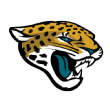
11. Dede Westbrook, WR, Jacksonville Jaguars
Age 24 | 386 offensive snaps | Fourth-round pick (2017)
Westbrook fell to the fourth round on account of domestic violence allegations. Westbrook also had an interesting pre-draft process. He got kicked out of a combine interview, and a scout told NFL Network's Albert Breer that Westbrook was a "degenerate." But, Westbrook's suddenness and pure speed made him a big-play threat at Oklahoma. Our Playmaker Score wide receiver projections loved Westbrook, giving him the seventh-highest score in the class despite a fourth-round projection.
Westbrook missed most of the early part of his rookie season with a core muscle injury that put him on the physically unable to perform list, then followed that up by being targeted so often in his later games that he actually qualified for Football Outsiders' full-season ranking list. Granted, he had minus-35 DYAR. However, he was also playing with Blake Bortles, and hadn't really worked with anyone in the offense before.
Long-term, Westbrook profiles as a gadget receiver with burn-you speed. With Jacksonville purging their receiver corps by letting Allen Hurns and Allen Robinson walk, Westbrook should find himself with plenty of playing time again. With some creative coordinating, he could be the field-stretcher that Bortles repeatedly overthrows by 10 yards.

12. Dylan Cole, LB, Houston Texans
Age 24 | 205 defensive snaps | Undrafted (2017)
Not invited to the combine out of tiny Missouri State, Cole came on the draft radar after putting up some eye-popping numbers at his pro day, when he ran a 4.52 40-yard dash and tacked on a 39-inch vertical leap for good measure. His college production? He led FCS in tackles in his senior year, with 142. His college career saw him rack up 40.5 tackles for loss.
Cole already showed off his ridiculous athleticism, picking two balls for the Texans early in the season, one that saw him run all the way down field from his linebacker spot to undercut a corner route. A grade II hamstring strain limited his snaps, but he was definitely the pick of the litter next to Bernardrick McKinney early in the year, and then fought his way back on to the field after the injury.
Cole profiles as either a passing-down linebacker or a three-down linebacker in the pros, depending on if he can get his broken tackle rate (five, in limited snaps) down without sacrificing the speed. He's stuck behind Zach Cunningham and McKinney for the time being, but could resurface later.

13. Chris Carson, RB, Seattle Seahawks
Age 24 | 152 offensive snaps | Seventh-round pick (2017)
Chris Carson came out of nowhere. A relative unknown as the backup tailback for Oklahoma State, Carson was an afterthought in the general draft community when the Seahawks took him in the last round of the 2017 draft. He was stacked behind Eddie Lacy, Thomas Rawls and C.J. Prosise on the Seattle depth chart, and measured against players such as Troymaine Pope that had their own supporters.
Carson simply came out in training camp and played better than all of them. For the games he was healthy before fracturing his ankle, he was the only Seattle back that could lead a functional running game. Behind a terrible offensive line, Carson had 33 rushing DYAR this year. All other Seattle backs combined for minus-171 rushing DYAR. He broke an insane 21 tackles in just 56 touches. And Carson showed off in the passing game, as well.
Seattle decided to draft Rashaad Penny in the first round, which is why Carson is where he is on this list. But Penny might see less of the field than most observers expect if Carson returns fully healthy. He flashed true three-down ability in his first taste of the NFL, and was the toast of OTAs.

14. Fabian Moreau, CB, Washington Redskins
Age 24 | 59 defensive snaps | Third-round pick (2017)
It's not very often you see Mike Mayock's favorite corners in the draft available for our list. Most of the time those guys are starting by Week 4. Moreau slipped out of the first two rounds after tearing his quad at his pro day. Before that, he put on a show at the combine, with a 4.35 40-yard dash at 206 pounds -- that's prototypical size and speed. He also demonstrated nuanced technique of the position at the Shrine Game. About the only real critiques teams could pin on him were his lack of interceptions (three in four seasons) and general questions about his instincts.
Moreau made a token appearance for Washington last season, getting run early against the Chiefs and 49ers in October before disappearing back to special teams duty. The small sample size yielded a 50 percent success rate on 12 passes. He was mostly playing inside.
Moreau definitely profiles more as an outside corner, though Washington is hurting for slot help after trading former Football Outsiders top prospect Kendall Fuller to Kansas City in the Alex Smith trade. Competition is assured in camp, but going against what's left of Orlando Scandrick and steady contributors like Quinton Dunbar, we expect Moreau to see plenty of time on the field this year.

15. Julien Davenport, OT, Houston Texans
Age 23 | 241 offensive snaps | Fourth-round pick (2017)
Davenport is an agile tackle with great size, a 6-foot-7, 318-pound block of clay. The 40-yard dash (5.15) and bench press (18 reps) were pretty bad, but the rest of his combine was impressive. Coming out of tiny Bucknell, he dominated against weak competition and hadn't really learned most of the technical attributes of playing tackle. He was a blank slate.
Early on, it showed. Davenport was a frequent push-back target in his first real NFL action, against the Bengals. His only experience as a full-time starter came in Houston's worthless end-of-season games, where he was the starting left tackle against Pittsburgh and Indianapolis. But Davenport acquitted himself fairly well in those games, at least compared to the rest of the offensive line.
The Texans didn't really add any other potential left tackles in the draft or free agency. Third-round pick Martinas Rankin was seen as more of a right tackle by scouts, and Seantrel Henderson is too iffy to rely on. It seems likely Davenport will get the first crack there, and he has the tools to make it work. The question will be: How much has he learned since last year?

16. Andrew Billings, DT, Cincinnati Bengals
Age 22 | 336 defensive snaps | Fourth-round pick (2016)
A player we expected to be a starter right away for the Bengals instead saw his role reduced by veteran Pat Sims. We still remain high on Billings' tools, though. He showed elite strength and nimble feet at Baylor, where he was the co-Big 12 Defensive Player of the Year at 20 years old. He racked up 26.5 tackles for loss in his last two years of college. And, over the second half of the season, he steadily became a starting tackle in Cincinnati.
Will he ever be more than a run-stuffing nose tackle? That remains to be seen. He may still be working the creaks out of his surgically repaired knee at this point. But the snap count is so low that we're banking more on his college performance.
The Bengals brought in ex-Bucs and Washington nose Chris Baker this offseason, so we'll know pretty quickly whether they've moved on from Billings. The talent is worth fighting for, but it's hard to blame them for being cautious two years in. Billings will be off the top prospects list one way (plays well) or another (non-factor) next year. We said the same thing about Saints corner P.J. Williams last year, and that worked out OK for New Orleans.
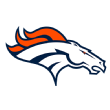
17. Jake Butt, TE, Denver Broncos
Age 22 | 0 offensive snaps | Fifth-round pick (2017)
Another argument against meaningless college bowl games, Butt tore his ACL in the Orange Bowl, sending his draft stock tumbling from a likely Day 2 pick to the fifth round. He was not able to show anything pre-draft. Butt's college production was pretty solid considering the state of Michigan's passing game, but he didn't have a ton of burst off the snap. Butt won't stretch the field, but he can provide reliable, effective receiving ability within 20 yards of the line of scrimmage.
A non-factor in Denver in his rookie year following the injury, Butt was placed on IR prior to the season starting. Had he been healthy, the Broncos hadn't planned much in the way of his playing early. Virgil Green and Jeff Heuerman were the main Broncos tight ends last season.
Heuerman is the only real obstacle in front of Butt this year, as the Broncos did little to address the position in free agency. Broncos coach Vance Joseph told reporters at OTAs that Butt will "do everything he has to do to be a great player. If I'm betting on Jake, I'm betting it's going to happen." Butt doesn't project as a high-ceiling, Rob Gronkowski-esque tight end, but could be a long-term fixture and is one of the safest players on this list assuming he fully recovers from the ACL tear.

18. Mack Hollins, WR, Philadelphia Eagles
Age 24 | 287 offensive snaps | Fourth-round pick (2017)
Hollins had 20 touchdown receptions on just 81 catches in college for North Carolina. A hulking, 6-foot-4, 221-pound frame that comes at you like a freight train with 4.5 40-yard dash speed, Hollins checked a lot of boxes as a physical downfield receiver who could also contribute on special teams right away.
In his rookie season, he was a go-to for the Eagles on their short plays. Hollins led all Eagles receivers in DVOA at 24.2 percent. (Only Nelson Agholor also finished with an above-average DVOA.) He did this despite only one long touchdown catch. Generally, receivers with this sort of DVOA in a small sample are boosted by a few big catches; Hollins was not.
The offseason saw Torrey Smith replaced by Mike Wallace, but Hollins could still force his way on to the field with a good training camp. He's got all the requisite physical attributes, and Philadelphia loved to chuck it down the field last season with Carson Wentz. All it would take is one injury for Hollins to have massive fantasy football appeal.

19. Chris Wormley, DL, Baltimore Ravens
Age 24 | 190 defensive snaps | Third-round pick (2017)
Wormley was a run stuffer extraordinaire early on at Michigan. Later in his career, he also developed some pass-rushing moves. Wormley finished with nine tackles for loss and six sacks, and he was a first-team All-Big 10 selection. He tacked on an impressive 7.08 three-cone drill time at 298 pounds at the combine. So, to no one's surprise, he was a second-day NFL pick.
Wormley had no sacks, but four hurries early in his NFL career. He has basically replaced Michael Pierce as "promising young defensive line prospect" on both the Baltimore roster and on our list. The Ravens have a pretty decent defensive line, so there's not a lot of impetus for Wormley to get snaps early.
However, his ceiling as an inside player with some pass-rush moves might be intriguing enough for him to see the field on pass-rushing downs. Outside of Pierce and Wormley, the Ravens have only oft-injured Carl Davis as an interior lineman with any kind of pass-rush promise.

20. Damontae Kazee, S, Atlanta Falcons
Age 25 | 164 defensive snaps | Fifth-round pick (2017)
A playmaker in the secondary, Kazee snatched 15 interceptions in his last two seasons at San Diego State, along with 43 passes defensed over his last three seasons. His combine was fairly pedestrian though, and that, along with his size (5-foot-10, 184 pounds), had him last all the way until the fifth round, where Atlanta snatched him up.
In Kazee's first season, he flipped from cornerback to safety, coming in as a backup and playing large chunks of games against Buffalo in Week 4, Tampa Bay in Week 12 and Minnesota in Week 13. He forced two fumbles and continued to showcase those instincts, and the move to safety kept his recovery speed from being as big of an issue as it could have been as an NFL cornerback.
Heading into 2018, his role is almost fully dependent on Ricardo Allen. Allen has yet to sign his RFA tender in the hopes of getting a new long-term deal; the Atlanta brain trust might be looking at Kazee, remembering how they developed Allen as a undrafted free agent, and making the thinking face emoji. Kazee's instincts make him a problem for opposing quarterbacks in the middle of the field.

21. D'Onta Foreman, RB, Houston Texans
Age 22 | 147 offensive snaps | Third-round pick (2017)
Foreman is a size-speed nightmare for defenses, who was dinged coming out of Texas for his fumbling and his tendency to flirt with cuts a bit much. But he was the workhorse back and entire offense for the Longhorns, and his talent was evident in his rookie season. Every time the Texans played without Deshaun Watson, Lamar Miller trudged in mud while Foreman's fresh legs provided more burst. Per DVOA, they were about even, with Miller picking up 57 DYAR to Foreman's 10 in about 170 more carries.
Unfortunately, Foreman tore his Achilles tendon on a long touchdown run against Arizona, putting his status into a little more question. He didn't take the field in OTAs and was put on the PUP list ahead of training camp.
However, the talent box is checked, and the opportunity is wide open in the Houston backfield. Miller has been a disappointment who hasn't been able to do better than "steady," and the other backs on the roster are filler. So if Foreman gets healthy, he's got a lot of upside in front of him.

22. Josh Reynolds, WR, Los Angeles Rams
Age 23 | 280 offensive snaps | Fourth-round pick (2017)
Another player that the draftniks liked a little more than the scouts, primarily due to size. Reynolds is 6-foot-3, but only 194 pounds, and he was seen as skinny and frail by the latter group. Reynolds had a lackluster combine -- not bad, but with nothing that really stood out. He caught 30 touchdowns in three seasons at Texas A&M, but in a broad picture view, was merely a good all-around prospect by the numbers. He had a good-not-great 83.9 percent Playmaker Score. Reynolds' college tape, however, was excellent. He was noted for his deep-ball prowess, with enough acrobatic ability to make twisting catches, and he showed great work on slant routes as well.
In his rookie season, buried behind Sammy Watkins, Cooper Kupp and Robert Woods, Reynolds didn't play all that much. A low catch rate anchored him to a minus-31.0 percent DVOA in a small sample size. A torn labrum at the end of the season also cost him work this offseason.
Letting Watkins walk in free agency would seem to have opened up a job for Reynolds, but instead the team traded for Brandin Cooks, throwing Reynolds back into the No. 4 receiver role. The good news is that Tavon Austin's snaps are gone, which should at least enable Reynolds to showcase his talent if someone gets hurt. The sky is the limit here, but there are question marks.

23. Duke Riley, LB, Atlanta Falcons
Age 23 | 223 defensive snaps | Third-round pick (2017)
It comes in a Telvin Smith package; will it play like Telvin Smith? Riley was buried on the depth chart at LSU, only getting a real chance in his senior season. He's 6-foot-0, 232 pounds, and his play strength was questioned for the entire draft process. He didn't help himself there at the combine either, performing only 18 bench reps. However, his change-of-direction metrics were strong, and he ran a 4.58 40-yard dash. So the Falcons, a team that already had the player that kept Riley off the field in his junior year -- Deion Jones -- sprung for him in the third round.
Riley had started seeing the field early before an October meniscus tear wiped him out of the lineup, and he was a non-factor when he returned in November. As you may have surmised, they weren't necessarily great reps. Riley had 10 missed tackles in limited snaps and looked like a rookie in pass coverage as well.
However, the physical talent is still there, and the Falcons haven't cleanly blocked him from playing at all. The skill set to be a three-down linebacker is still here. But Riley hasn't earned much benefit of the doubt yet, and a bad year could make him an afterthought in Atlanta.

24. Kenneth Dixon, RB, Baltimore Ravens
Age 24 | 258 offensive snaps | Fourth-round pick (2016)
We just can't quit Dixon. At least not yet.
It's hard to understand how Dixon made it to the fifth round. Wildly productive, he held the career FBS touchdown record for a few days at the end of his senior season, before Keenan Reynolds snagged it back. He was first-team All-Conference as a freshman at Louisiana Tech. He's a great receiver out of the backfield. He doesn't go down on first contact, and he gets the most out of every run. While he's not a premium athlete, he showed plenty of burst at the NFL combine with his jump metrics. He actually had an extremely similar combine profile to Kareem Hunt.
Dixon's NFL career has been derailed by injuries and suspensions. A four-game suspension for PEDs became a six-game suspension when he ran afoul of the substance abuse policy. He ended up serving that suspension on injured reserve when he tore his meniscus before the 2017 season began, and his 2016 season was also cut into by a sprained MCL.
Still only 24, Dixon is looking up at Alex Collins' terrific season and will also have to prove himself over Javorius Allen. He still has the talent to be the best back the Ravens have this season. But time is running out for him to show that. As you might expect, he's not exactly the most popular name in John Harbaugh's mind right now.

25. Carlos Henderson, WR, Denver Broncos
Age 23 | 0 offensive snaps | Third-round pick (2017)
Much like Derek Rivers, Henderson was a pre-draft favorite of many in the draftnik community -- and did absolutely nothing in his freshman NFL season, due to injury. However, unlike Rivers, Henderson likely could have come back earlier if the Broncos wanted him to be on the field. He was placed on IR with a thumb injury that was likely a stash move, as his first training camp did not go well.
Henderson led the nation with 19 touchdown catches at Louisiana Tech in 2016, and had star special teams upside as well, as he was named Conference USA's special teams player of the year. There were some dings on Henderson's tape. He's physical, agile and explosive, but put up poor combine times in the short-area quickness measurements: 7.18 in the three-cone drill, 4.35 in the 20-yard shuttle, and an 11.79 60-yard shuttle. He also rarely had to face press coverage at Louisiana Tech, and has some work to do in the more technical aspects of route running. Regardless, our Playmaker Score loved him, giving him a 97.4 percent rating.
Scuttlebutt out of Denver had the third receiver job behind Demaryius Thomas and Emmanuel Sanders wide open in OTAs. Henderson is facing a bit of an uphill battle as Courtland Sutton was drafted in the second round this year and may have an edge. The Broncos also drafted DaeSean Hamilton in the fourth round. It could just be that all these players are meant to replace the aging Thomas and Sanders. Or, it could be that the Broncos are already not counting on further development from Henderson.
Honorable mention
James Conner, RB, Pittsburgh Steelers
Parker Ehinger, OG, Kansas City Chiefs
Rico Gathers, TE, Dallas Cowboys
Daeshon Hall, DE, Carolina Panthers
Jaleel Johnson, DT, Minnesota Vikings
Chad Kelly, QB, Denver Broncos
Montae Nicholson, S, Washington Redskins
Nico Siragusa, OG, Baltimore Ravens
ArDarius Stewart, WR, New York Jets
Taywan Taylor, WR, Tennessee Titans
Methodology
This is the 12th anniversary of the list. We're still relying on the same things we always do: scouting, statistics, measurables, context, ceiling, expected role, and what we hear from other sources. The goal is to bring your attention to players who are still developing in their second and third seasons, even after the draftniks have forgotten them. It's important to note that this list is not strictly about fantasy football (otherwise, there wouldn't be offensive linemen on it) and it's about career potential, not just the 2018 season.
Here's our full criteria:
Drafted in the third round or later, or signed as an undrafted free agent
Entered the NFL between 2015 and 2017
Fewer than 500 career offensive or defensive snaps (except running backs, who are allowed just 300 offensive snaps)
Have not signed a contract extension (players who have bounced around the league looking for the right spot, however, still qualify for the list)
Age 26 or younger in 2018
You'll see a number of references to Football Outsiders stats on our list, in particular DVOA (defense-adjusted value over average), which takes every play and compares its success to the NFL average based on situation and opponent, and DYAR (defense-adjusted yards above replacement), which gives total value by comparing efficiency on each play to a replacement-level player. You can read more about those and other FO stats on this page. Many of the other stats come from Sports Info Solutions and can be found in our new book, Football Outsiders Almanac 2018.
